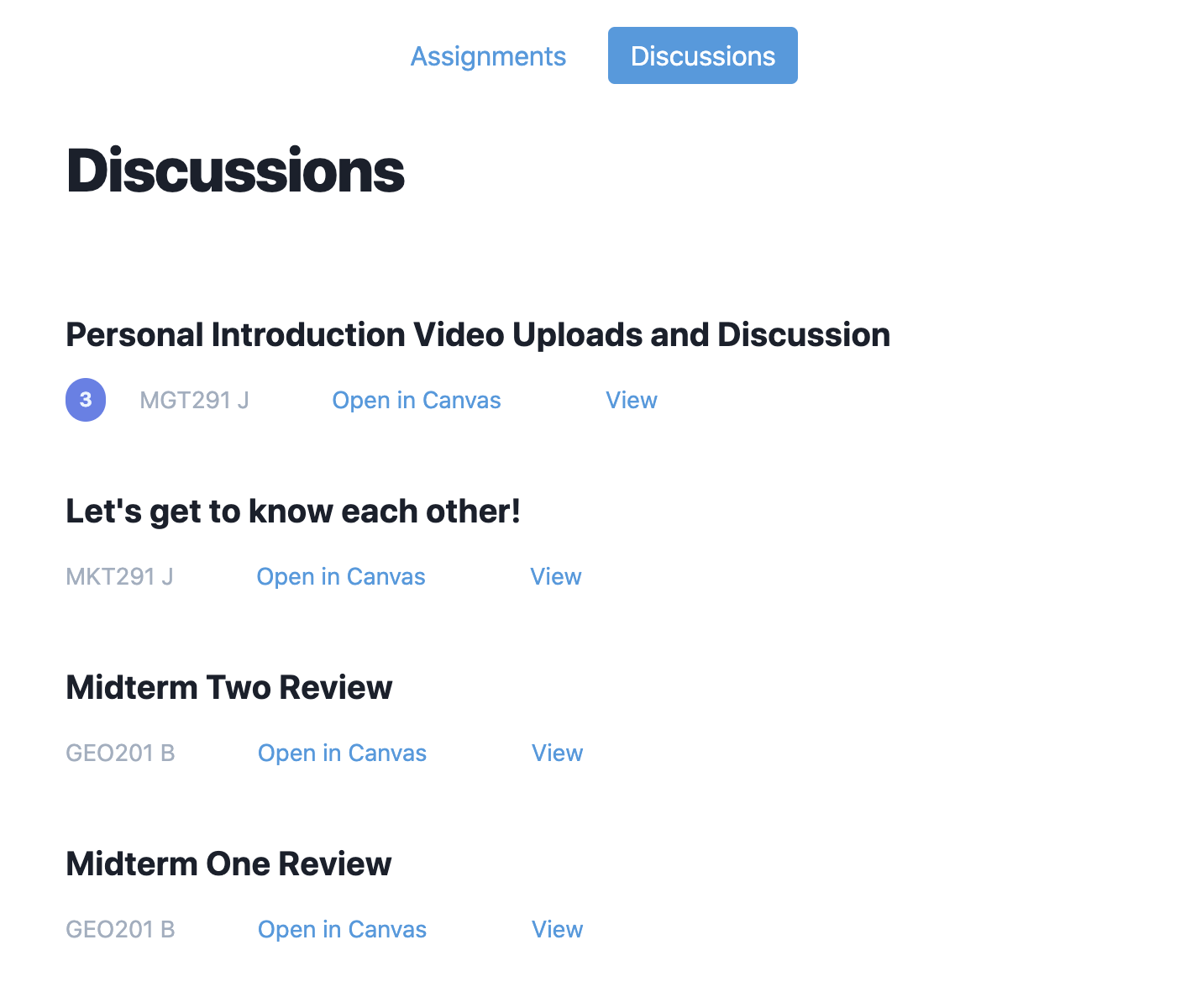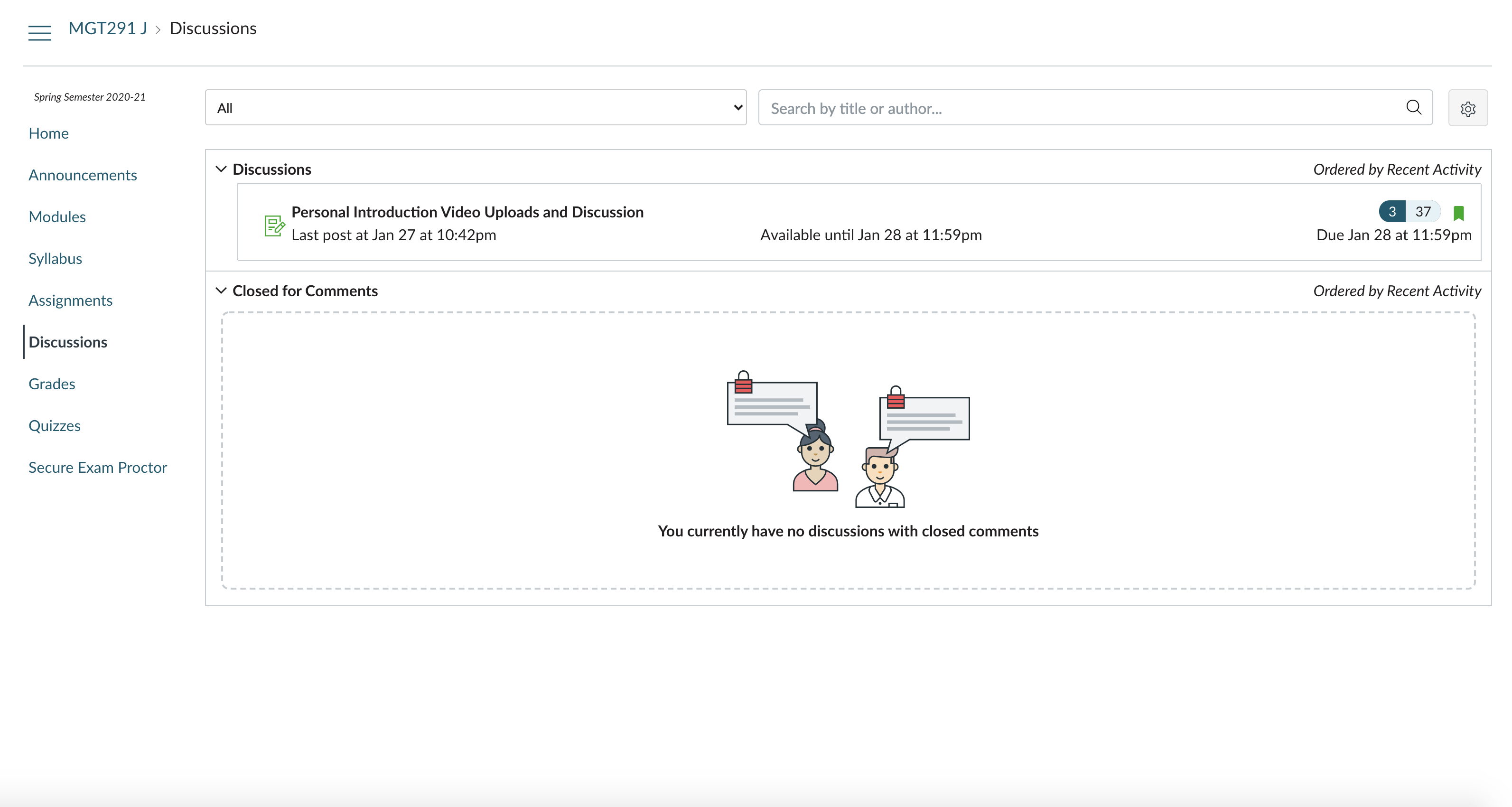First Day of Class 2021
Planted 02021-01-25
The joys and struggle of online class. Round 2.
Last semester I wrote First Day of Class 2020. So here’s a continuation of that.
I’ve opted for another semester of being all online, as this is likely the last semester that option will be viable at my University.
I continue to have issues with communication from professors—and the lack thereof—and problems with Canvas. Although I have remedied the largest problem (discussions) by creating my own app that utilizes the Canvas API.
With the Canvas iOS app no longer pinging specific discussions for every comment made, my own app that displays discussions from every class in one view and sorts by number of unread messages is tremendously helpful.

Remarkably enough, there is no view in Canvas to give me information live the above. You can only click in to every-single-class and then click into Discussions to see all the discussions of that single class.

Now, this could be a feature already in Canvas and just not activated on the admin side but I doubt it and I don’t care enough to find out.
The second most notable thing I’ve seen is working face-to-face with other remote students who have gone home to a non-US country. I imagine this is many students at my University due to COVID. For these students, the normal class times for me are midnight and early-morning for them. Synchronous by default needs to change.
For so many reasons, one that seems overlooked is accessibility.
I’d suggest this asynchronous communication article by the team at Doist to start.
Synchronous communication should be the exception, not the rule.
Another annoyance is that content is released as late as possible. I imagine it comes from teachers seeking to make online learning as close as possible but that’s not how we should start online.
I spend a large part of my days wandering, and you can’t find the the hutzpah to make your class content accessible.
My final annoyance is that I don’t want to show my face in synchronous classes. Unless Zoom meetings require actual discussion, I would like to treat it like I treat all my other content. I don’t want to worry about what I’m doing, how I might look on camera, or who might be watching.
I’m here for the content. If I have something to say, I’ll turn on my camera because yes, I think that if I’m going to be speaking to you and the option for video is that easy, it should be used.
It’s weird seeing content becoming more accessible while content from Universities manages to become more inaccessible. As I said previously, this is mostly from Universities relying on third parties to deliver course content and those third parties seeking a monopoly on information.